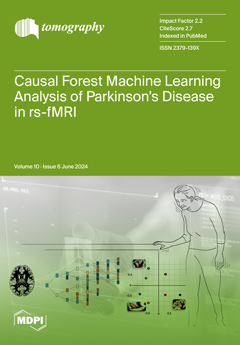Open AccessArticle
Understanding the Dermoscopic Patterns of Basal Cell Carcinoma Using Line-Field Confocal Tomography
by
Lorenzo Barbarossa, Martina D’Onghia, Alessandra Cartocci, Mariano Suppa, Linda Tognetti, Simone Cappilli, Ketty Peris, Javiera Perez-Anker, Josep Malvehy, Gennaro Baldino, Caterina Militello, Jean Luc Perrot, Pietro Rubegni and Elisa Cinotti
Cited by 3 | Viewed by 2690
Abstract
Basal cell carcinoma (BCC) is the most frequent malignancy in the general population. To date, dermoscopy is considered a key tool for the diagnosis of BCC; nevertheless, line-field confocal optical coherence tomography (LC-OCT), a new non-invasive optical technique, has become increasingly important in
[...] Read more.
Basal cell carcinoma (BCC) is the most frequent malignancy in the general population. To date, dermoscopy is considered a key tool for the diagnosis of BCC; nevertheless, line-field confocal optical coherence tomography (LC-OCT), a new non-invasive optical technique, has become increasingly important in clinical practice, allowing for in vivo imaging at cellular resolution. The present study aimed to investigate the possible correlation between the dermoscopic features of BCC and their LC-OCT counterparts. In total, 100 histopathologically confirmed BCC cases were collected at the Dermatologic Clinic of the University of Siena, Italy. Predefined dermoscopic and LC-OCT criteria were retrospectively evaluated, and their frequencies were calculated. The mean (SD) age of our cohort was 65.46 (13.36) years. Overall, BCC lesions were mainly located on the head (49%), and they were predominantly dermoscopically pigmented (59%). Interestingly, all dermoscopic features considered had a statistically significant agreement with the LC-OCT criteria (all
p < 0.05). In conclusion, our results showed that dermoscopic patterns may be associated with LC-OCT findings, potentially increasing accuracy in BCC diagnosis. However, further studies are needed in this field.
Full article
►▼
Show Figures






